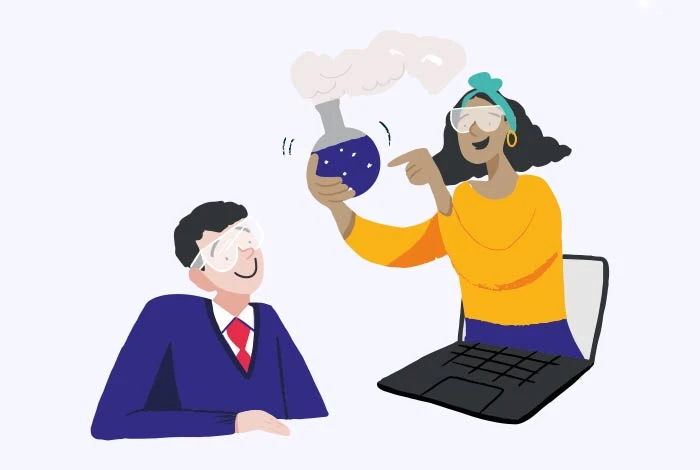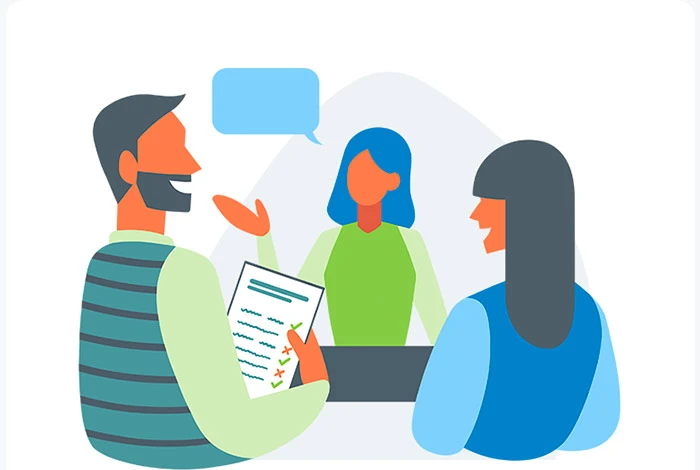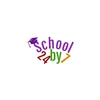Powerful Strategies to Improve Academic Performance of Weak Students

Summary: Learn about the most successful methods to improve the academic performance of your students. Understand the personalized techniques that can be utilized by educators, parents, and students to unleash the maximum potential.
In the dynamic world of education, one truth remains constant: not all students learn at the same pace. Moreover, as educators, we have all encountered such students who seem to struggle academically.
The student who sits in the back of the classroom, eyes downcast and shoulders slumped, as if defeated by their own academic shortcomings. But what if I told you there are powerful strategies and action plan for weak students that can turn things around for students in need of support?
These strategies can transform their academic performance and enhance confidence in their abilities. So, let’s unveil the action plan that can bring about positive change for your weak students and inspire their journey toward academic success.
What are the Challenges Faced by Teachers?
We interviewed a few tutors about the steps taken by them while trying to improve the performance of weak students. They also shared a few challenges that they commonly encounter on this journey.
Let’s address some of the challenges that they shared with us. Here are a few of them:
- Addressing diverse learning needs
- Motivating students with varying levels of engagement
- Finding remedial measures for weak students
- Devising teaching strategies for weak students
- Finding ways to improve education quality
- Providing individualized support
- Creating the action plan for slow learners
- Collaborating with parents and caregivers to enhance student performance
- Leveraging technology and educational tools effectively
- Discovering the strategy to improve students performance
However, passionate educators face these problems head on. They implement innovative teaching methods, adapt their strategies like implementing student management software to meet individual needs.
9 Tips On How to Improve the Academic Performance of Weak Students
When it comes to enhancing the academic performance of weak students, educators have developed a range of effective strategies that can make a significant difference in their learning journey. Let’s explore a few valuable tips on how to improve the academic performance of weak students.
1. Examine the Root Cause of Students’ Weak Performance
As a teacher, it is crucial to comprehend and assess the specific areas or subjects in which dull students may be struggling. Engage in conversation with them to gain a better understanding. The more familiar you become with their strengths and weaknesses, the better equipped you will be to draw conclusions and provide assistance.
There are various factors that can lead to a student’s academic struggles, including:
- Insufficient Self-Discipline
- Limited Learning Opportunities
- Disordered Home Environment
- Complex, Incomprehensible Study Materials
- Anxiety and Stress
These reasons may contribute to their weak performance, and once you identify the problem, you can provide them with effective assistance.
Note: Understanding the root cause of students’ academic struggles is essential for effective intervention and support.
3. One on One Personalized Tutoring

One of the things that teachers pointed out during the interview with us was the effectiveness of one-on-one personalized tutoring for weak students’ improvement.
Those who are struggling with academics often need individualized attention in order to fully grasp difficult concepts and bridge the learning gaps. This targeted approach allows tutors to personalize their teaching methods in a way that those suit the unique needs of each student.
One such example of personalized teaching is providing customized explanations and examples that resonate with students on a deeper level.
Not only does one-on-one tutoring provide a tailored learning experience, but it also fosters a sense of accountability and motivation among students. With undivided attention from their tutor, weak or dull students feel more supported and encouraged to overcome their challenges.
Note: You can use student management software to streamline and enhance One-on-One Personalized Tutoring by tracking student performance, managing schedules, and customizing learning plans.
3. Regular Assessment
Assessments play a crucial role in identifying areas of weakness and tracking progress over time. By implementing a system of frequent evaluations, educators can gain valuable insights into their students’ learning curve and tailor their teaching approach accordingly.
Regular assessments not only help identify where students are struggling but also provide an opportunity to create personalized remedial plans. For instance, if a student consistently struggles with certain concepts, additional resources or one-on-one tutoring can be recommended to address those specific areas.
This targeted approach ensures that weak students receive the extra support rather than being left behind in a one-size-fits-all classroom environment.
Note: Regular assessment is the compass that guides educational progress, providing vital insights to adjust and improve learning journeys.
4. Encourage a Growth Mindset

One effective way to improve the academic performance of weak students is to encourage them to adopt a growth mindset. These students often believe that their intelligence and abilities are limited, and they give up easily when faced with challenges or setbacks.
By promoting the idea that intelligence can be developed through effort and resilience, they are more likely to embrace learning opportunities and persist in their studies.
Teachers can foster this mindset by praising students’ efforts rather than just their results, encouraging them to view mistakes as learning opportunities, and providing constructive feedback that focuses on improvement.
Note: Promote a growth mindset to empower students to embrace challenges and view setbacks as opportunities for learning and growth.
5. A Healthy Feedback Can Make a Huge Impact

How to improve academic performance of weak students? One of the best strategies is to provide healthy feedback to students. Feedback provides students with information about their strengths and areas for improvement, allowing them to concentrate on tasks and make advancements.
Feedback cultivates a growth mindset within students. When they receive feedback, they are more inclined to view their weaknesses as opportunities for growth and approach learning with a more positive attitude. A healthy feedback plays an important role in fostering self-reflection and self-evaluation, empowering students to gain a deeper awareness of their own learning processes.
Moreover, timely and constructive feedback serves as a real motivator. When students receive feedback that is meaningful and actionable, it ignites their motivation to excel and engage wholeheartedly in their studies.
Note: Student management software allows educators to track students’ progress, identify areas of weakness, and deliver timely feedback through features like grade tracking, assignment submissions, and more.
6. Use Varied Teaching Strategies
While creating an action plan for slow learners, it is important to understand that the traditional teaching methods may not always be suitable for every student, especially those who struggle with learning at a slower pace.
By incorporating diverse approaches such as group activities, visual aids, and real-world examples, teachers can cater to different learning styles and engage students in a more meaningful way.
Moreover, interactive activities are an excellent tool for enhancing the learning experience of slow learners. These activities encourage active participation and collaboration among students, allowing them to grasp concepts better.
For example, group discussions, activities like debate, group study for slow learners or role-playing exercises can foster critical thinking skills and help weak students improve their communication abilities.
Note: Incorporate game elements and principles into lessons to make learning more engaging and interactive.
7. Communicate with Parents and Guardians

Many times, these parents or guardians are unaware of their child’s struggles in school, and may not understand how to support them adequately. By initiating regular communication, teachers can provide valuable insights into areas that need improvement and collaborate with parents to create an action plan for weak students.
Parents and guardians play a vital role in a student’s academic journey. By communicating openly about their child’s strengths, weaknesses, and progress, teachers can gain crucial insights from those who know a student the best – his or her family.
This collaboration allows for targeted support strategies at home that can reinforce classroom learning and build confidence in weaker areas.
Note: Student management software facilitates effective communication with parents and guardians. It fosters a collaborative environment for addressing academic concerns and tracking progress.
8. Create Interactive Learning Lessons
To create a remedial plan for weak students, it is better to create interactive lectures in the form of smart classrooms to improve their learning. Traditional educational approaches make the lessons cumbersome for students and they may lose interest in those lessons.
Therefore, it is better to make the class more interactive with digital diagrams and charts to explain topics. You can use several interactive learning courses to create courses for them in the form of presentations, PDFs, and video content to help them understand the topic better.
Note: Student management software can enhance academic performance by enabling educators to create interactive and engaging learning lessons. With this tool, they can incorporate channels like multimedia, visuals, voice notes, etc. to improve the academic performance of weak students.
How Can Technology Improve Academic Performance?

Technology is everywhere, So why not use it in education. One way to improve the academic performance of weak students is by leveraging technology, such as student management software or student analytics software.
These tools provide valuable insights into a student’s progress, allowing teachers to identify areas where they need additional support. By using student management software, educators can track attendance, assignments, and grades all in one place, making it easier to monitor each student’s academic journey. Let’s take a look at some of the benefits of using student management tools.
- Performance Evaluation
Student management tools allow us to conduct both individual and overall evaluations of student performance.
- Timely Assessment of Individual Performance
- Promptly Addressing Student Challenges
With the aid of these reports, teachers can precisely identify areas of weakness among students and enhance their teaching methods.
- Make Data-Driven Decisions
With the help of student management software, teachers can facilitate data-driven decision making. By gathering and analyzing data on students’ performance, teachers and administrators can identify trends and patterns that might be impacting students’ learning outcomes.
This allows them to make informed decisions about interventions, support programs, and teaching strategies that are tailored to each student’s needs.
- Seamless Collaboration
Many student management tools come with communication features. These features allow all parties to get real-time updates on a student’s progress. Teachers can easily update grades and share feedback with both parents and students through the software, ensuring that everyone is on the same page when it comes to understanding the areas of improvement.
Additionally, features such as online discussion boards or live chat options within the software enable parents to communicate directly with teachers regarding any concerns or questions they may have about their child’s academic performance.
- Long-Term Progress Tracking
Traditional methods of assessment often focus solely on immediate results, such as exam grades or homework completion. However, these measurements may not always be indicative of a student’s overall growth and development over time.
With student management software, educators can establish long-term goals for struggling students and track their progress towards achieving them. This enables teachers to identify areas of improvement or potential barriers to success that may not be immediately apparent through traditional assessments.
By tracking long-term progress, teachers can make informed decisions or adjustments to teaching methods to support the specific needs of individuals.
- Timely Intervention
One of the key benefits is the ability to track and analyze student data on a real-time basis. This software allows educators to closely monitor the progress of each student, identify areas where they are struggling, and intervene promptly with targeted interventions.
With a student management software, teachers can identify patterns in student performance and behavior that may be affecting their learning.
For example, if a particular student consistently scores low on quizzes but engages actively during class discussions, it could indicate that they struggle with test-taking skills rather than comprehension.
- Saves Time and Money
Managing, organizing, and recording student information manually requires significant amounts of time, paper, and storage space. Given the current environmental concerns surrounding global warming, it is crucial for educational institutions such as schools, colleges, universities, and coaching centers to adopt sustainable practices.
However, when you choose student management tools, you can conserve valuable resources such as time, money typically spent on paper and stationery, and your employees’ energy. These saved resources can then be redirected towards enhancing your educational institution, improving the learning environment, and enhancing the quality of education provided.
Suggested Read: Most Effective Classroom Management Strategies for Teachers
Real-Life Examples of Strategies to Improve the Academic Performance of Students
Before we conclude, let’s delve into some real-life examples that illustrate how these strategies have made a difference in improving the academic performance of weak students:
Example 1: Ridhi, who was struggling in Math, had been lagging behind her classmates for months. Mr. Roy, her teacher, recognized this and began offering personalized tutoring sessions twice a week.
During these sessions, Mr. Roy focused on Ridhi’s specific challenges and adapted his teaching accordingly. As time went on, Ridhi’s self-assurance grew and her math grades saw a remarkable improvement.
Example 2: Ritika frequently doubted her intelligence and ability to succeed in school. Ms. Varsha, her teacher, consistently motivated her to adopt a growth mindset.
She commended Ritika’s efforts and viewed mistakes as chances for learning. Over time, Ritika’s outlook on challenges improved, leading to increased dedication and visible academic progress.
Example 3: Chhotu Ram Public School, New Delhi implemented student management software into their operations. Teachers used this tool to track student progress and identify areas of weakness. One day, the software flagged several students who were struggling in reading comprehension.
Teachers promptly intervened, providing additional support and resources. As a result, the steps taken to improve student’s performance showed significant improvements in their reading skills over the course of the year.
Key Takeaways
As we conclude our topic on how to improve academic performance of weak students, here are some key points to look at:
- Academic performance disparities exist among students, and educators need effective strategies to support weaker students.
- Teachers face challenges in addressing diverse learning needs, motivating students, providing individualized support, and leveraging technology.
- Strategies for improving weak students’ performance include identifying root causes, offering one-on-one personalized tutoring, regular assessments, promoting a growth mindset, and providing constructive feedback.
- Diverse teaching strategies, such as group activities and interactive exercises, can engage slow learners effectively.
- Collaboration with parents and guardians is crucial to create an action plan for students, and technology tools like student management software can aid in tracking progress and facilitating communication.
- Student management software offers benefits like performance evaluation, data-driven decision-making, seamless collaboration, long-term progress tracking, timely intervention, and resource savings.
Questions Related to Strategies to Improve Academic Performance of Weak Students
What can teachers do to improve student achievement?
To improve the performance of your students you can promote interactive learning, work in small groups, and also create an inclusive learning environment. Further, you can also cite examples to help your students understand the lessons better.
What can be done to improve students' academic performance?
You can follow different ways to improve students' academic performance. Some of them include providing appropriate feedback to students, focusing on their improvement areas, and conducting activities that can help in strengthening their skills.
How do you motivate below-average students?
To motivate students who are below average, you can provide personalized encouragement, set achievable goals, create a positive learning environment, and use teaching methods that cater to their individual needs and interests.
How can a teacher help slow learners?
As a teacher, you can create a quiet place for learners to avoid distractions and give them positive feedback. You can also develop short lessons around a particular topic for better understanding and use visual illustrations.
What causes slow learning?
There are several causes of slow learning in students. Some of them include low intellectual abilities, personal factors, psychological issues, environmental factors, etc.
How to improve weak students in maths?
To improve the performance of students in math, provide extra practice sessions, offer one-on-one support, and relate math concepts to real-life situations.
How to improve education quality?
If you want to enhance education quality, invest in teacher training, update curriculum regularly, foster a culture of inquiry, and ensure access to resources and technology.
How to improve students performance?
To enhance the academic performance of students, it is essential to implement regular assessments, deliver constructive feedback, cultivate a supportive atmosphere, and promote the adoption of a growth mindset.
What are remedial measures for students?
Remedial measures for students typically include identifying and addressing their specific learning challenges, providing individualized support, offering extra practice and resources, using diverse teaching strategies, fostering a growth mindset, and maintaining open communication with parents or guardians to create a comprehensive plan for improvement.
Shubham Roy is an experienced writer with a strong Technical and Business background. With over three years of experience as a content writer, he has honed his skills in various domains, including technical writing, business, software, Travel, Food and finance. His passion for creating engaging and informative content... Read more





























